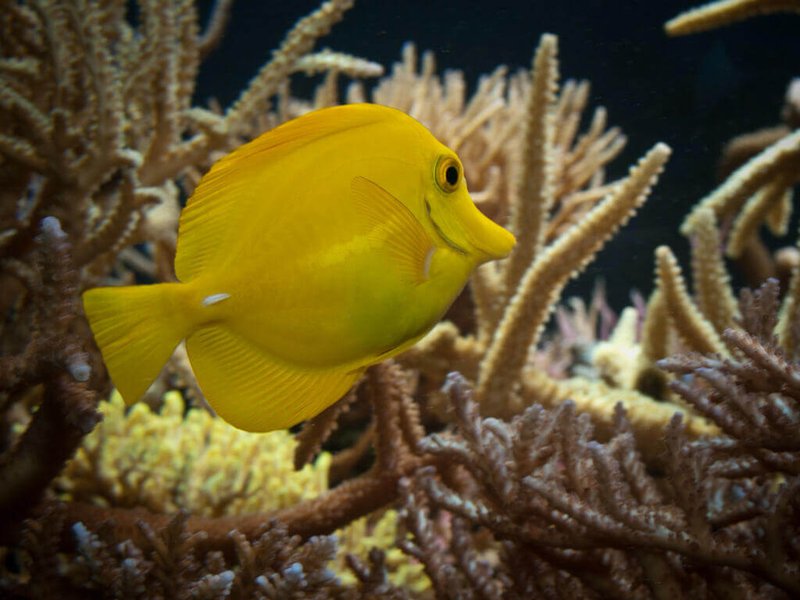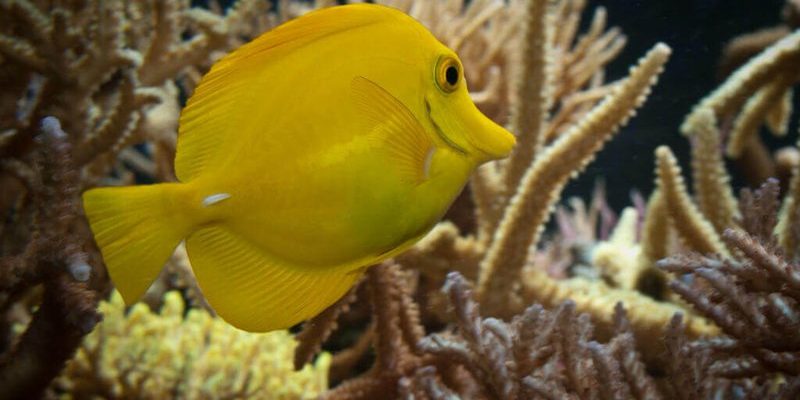
Imagine the ocean as a bustling city. Just like in any city, every resident has a job that helps keep everything running smoothly. In this analogy, the yellow tang acts like a dedicated gardener and cleaner, ensuring that the coral reefs remain healthy and vibrant. In this article, we’ll dive into the many facets of the yellow tang’s contributions to marine ecosystems, exploring how it interacts with its environment, other species, and why protecting it is vital for ocean health.
What Is a Yellow Tang?
Yellow tangs (Zebrasoma flavescens) are a type of surgeonfish found primarily in the warm waters of the Pacific Ocean, particularly around Hawaii. They can grow to be about 8 inches long and are known for their striking yellow coloration and a distinctive scalpel-like spine near their tails. You might be wondering why they have this sharp spine. Well, it’s a defense mechanism! When threatened, the yellow tang can use this spine to protect itself from predators.
These fish are most commonly found in coral reefs, where they thrive among the colorful corals and other marine life. Their diet mainly consists of algae, which they graze on throughout the day. This feeding behavior not only benefits the yellow tang but also plays a significant role in maintaining coral health.
The Role of Yellow Tangs in Algae Control
Here’s the thing: coral reefs need a balance of organisms to stay healthy, and that includes controlling algae growth. When algae bloom uncontrollably, it can smother corals and lead to a decline in reef health. That’s where the yellow tang steps in. By munching on algae, these fish help keep the reef ecosystem in check.
When yellow tangs graze on algae, it’s not just a meal for them; it’s a crucial service for the ecosystem. Less algae means more space and resources for corals to grow, which in turn supports a multitude of marine species. Think of yellow tangs as the caretakers of the reef, creating a hospitable environment for other fish and marine life.
Additionally, their feeding habits can encourage coral resilience. Healthy corals can better withstand environmental stressors, such as temperature changes or pollution. In essence, by controlling algae, yellow tangs help maintain the entire ecosystem’s balance.
Interactions with Other Marine Species
The yellow tang doesn’t operate in isolation; it has relationships with many other species in its habitat. For instance, while these fish are busy eating algae, they also contribute to the health of the reef by serving as prey for larger predators, like moray eels and groupers. In this way, yellow tangs are an important food source within their food web.
Moreover, their presence can influence the behaviors of other fish. Some small fish may take advantage of the yellow tang’s grazing habits by feeding on the leftover bits of algae and detritus. It’s a great example of how interconnected marine life really is.
You might also notice that some fish prefer to hang around the yellow tang. This is often because the tangs are known to be relatively docile, providing a safe space for smaller species. In a way, they foster community in their underwater neighborhoods.
Impact of Human Activity on Yellow Tang Populations
Unfortunately, yellow tangs are facing challenges due to human activities. Their populations are impacted by overfishing, especially in regions like Hawaii, where they are sought after for both aquariums and food. When too many yellow tangs are removed from their habitats, it disrupts the delicate balance of the ecosystem.
Habitat destruction also poses a significant threat. Coral reefs are suffering from climate change, pollution, and development. When reefs degrade, yellow tangs lose their homes, which affects not just them, but countless other species that rely on healthy reefs.
Protecting yellow tangs and their habitats is essential. Conservation efforts can help restore balance and ensure that these beautiful fish continue to thrive in their natural environment. Protecting them isn’t just about saving one species; it’s about preserving the entire ecosystem.
Conservation Efforts for Yellow Tangs
Many organizations and researchers are working diligently to protect yellow tang populations and their habitats. Initiatives often focus on sustainable fishing practices and the restoration of coral reefs. For example, some areas have implemented seasonal fishing bans, allowing yellow tang populations to rebound naturally.
Additionally, educating the public about the importance of yellow tangs and coral reefs can lead to more responsible behavior among fishermen and hobbyists alike. Awareness campaigns can promote the idea that while these fish are stunning aquarium additions, they belong in the ocean.
Community efforts also play a vital role. Locals in regions like Hawaii are increasingly advocating for marine protected areas (MPAs), which provide safe havens for yellow tangs and other marine life. These designated areas help in replenishing fish stocks and maintaining healthy ecosystems.
Why Yellow Tangs Matter for Marine Health
You might be thinking, “Okay, I get why yellow tangs are important, but why should I care?” Here’s the thing: the health of our oceans affects everyone, including us on land. Coral reefs, where yellow tangs live, are often called the “rainforests of the sea” because they harbor an incredible diversity of life.
Healthy reefs contribute to coastal protection, tourism, and fishing industries. They help filter pollutants and provide food and habitat for numerous marine species. When we protect yellow tangs, we’re also protecting an essential part of the marine ecosystem that supports life above and below the water.
In short, yellow tangs are not just pretty faces swimming around; they are a crucial piece of the ocean puzzle. Their role in maintaining the balance of marine ecosystems highlights the interconnectedness of life in our oceans.
The yellow tang’s role in marine ecosystems is nothing short of vital. From controlling algae growth to supporting other marine species and contributing to the health of coral reefs, these fish are essential caretakers of their underwater world.
As we become more aware of the challenges faced by yellow tangs and their habitats, we have an opportunity to make a difference. Supporting conservation efforts, advocating for sustainable practices, and educating ourselves and others can help ensure that these beautiful fish, and the ecosystems they support, thrive for generations to come.
So, next time you see a yellow tang, whether in an aquarium or on a reef, remember the important role it plays in the marine ecosystem. It’s more than a fish; it’s a champion of ocean health, and that deserves our attention and appreciation.

